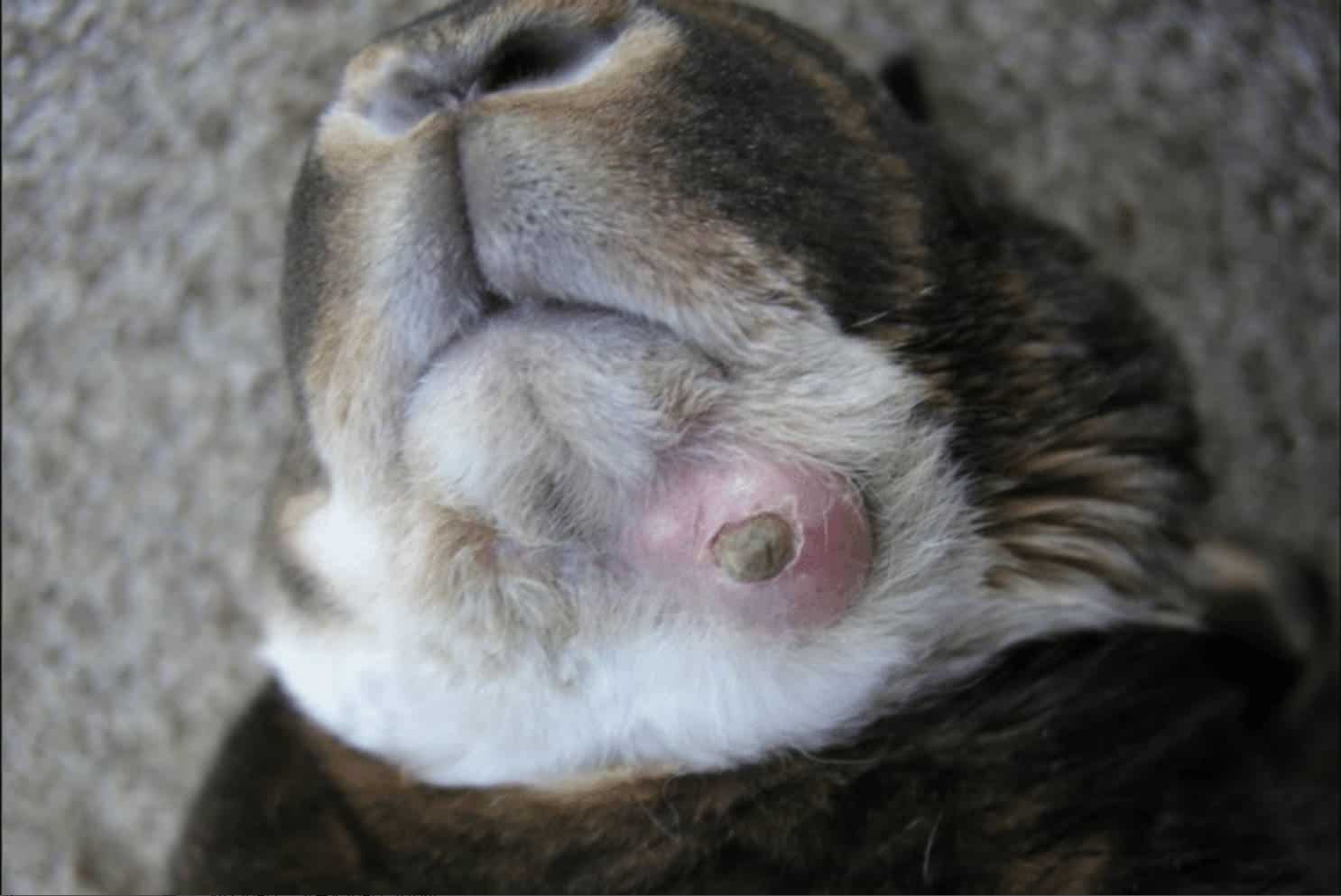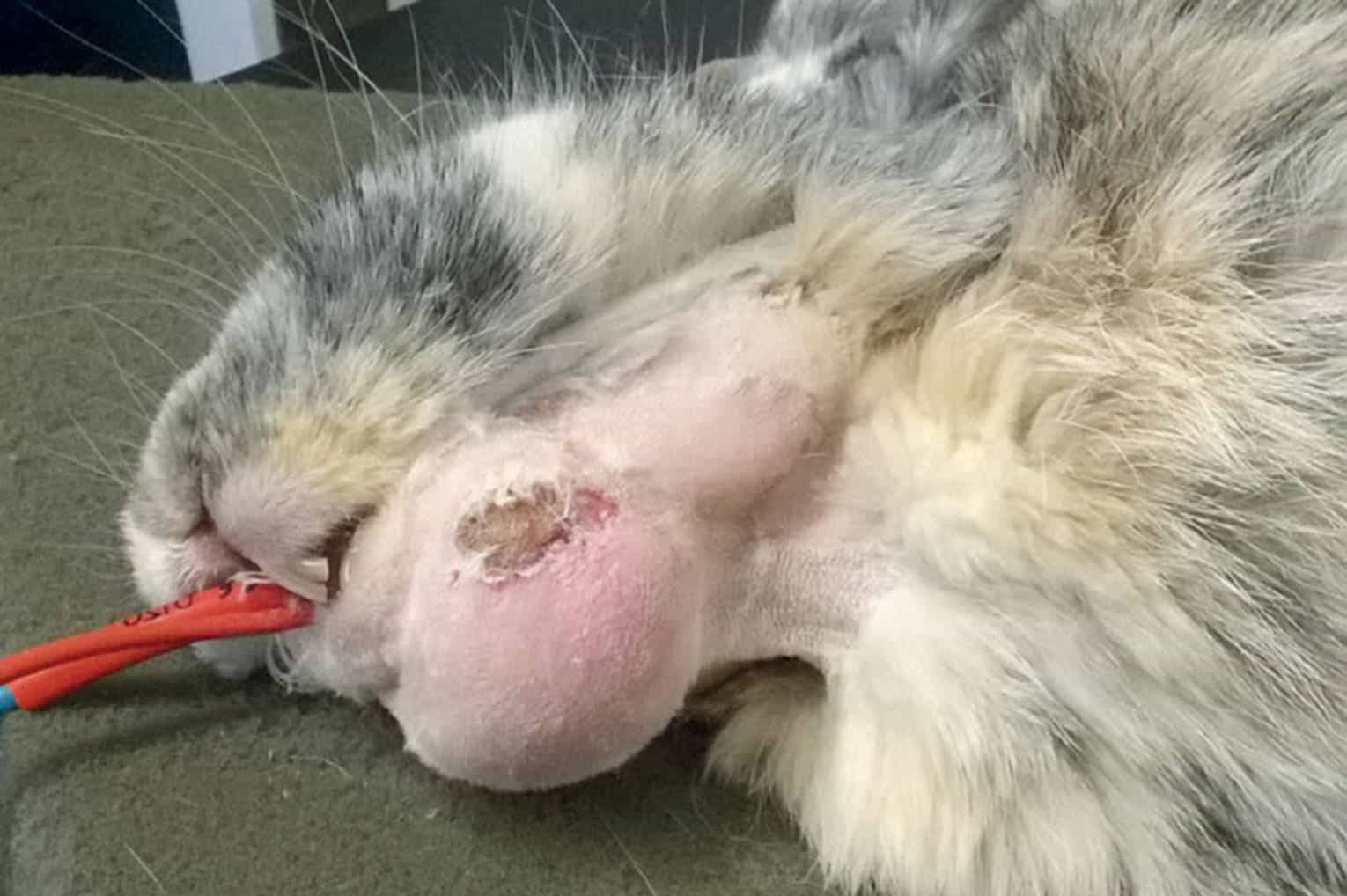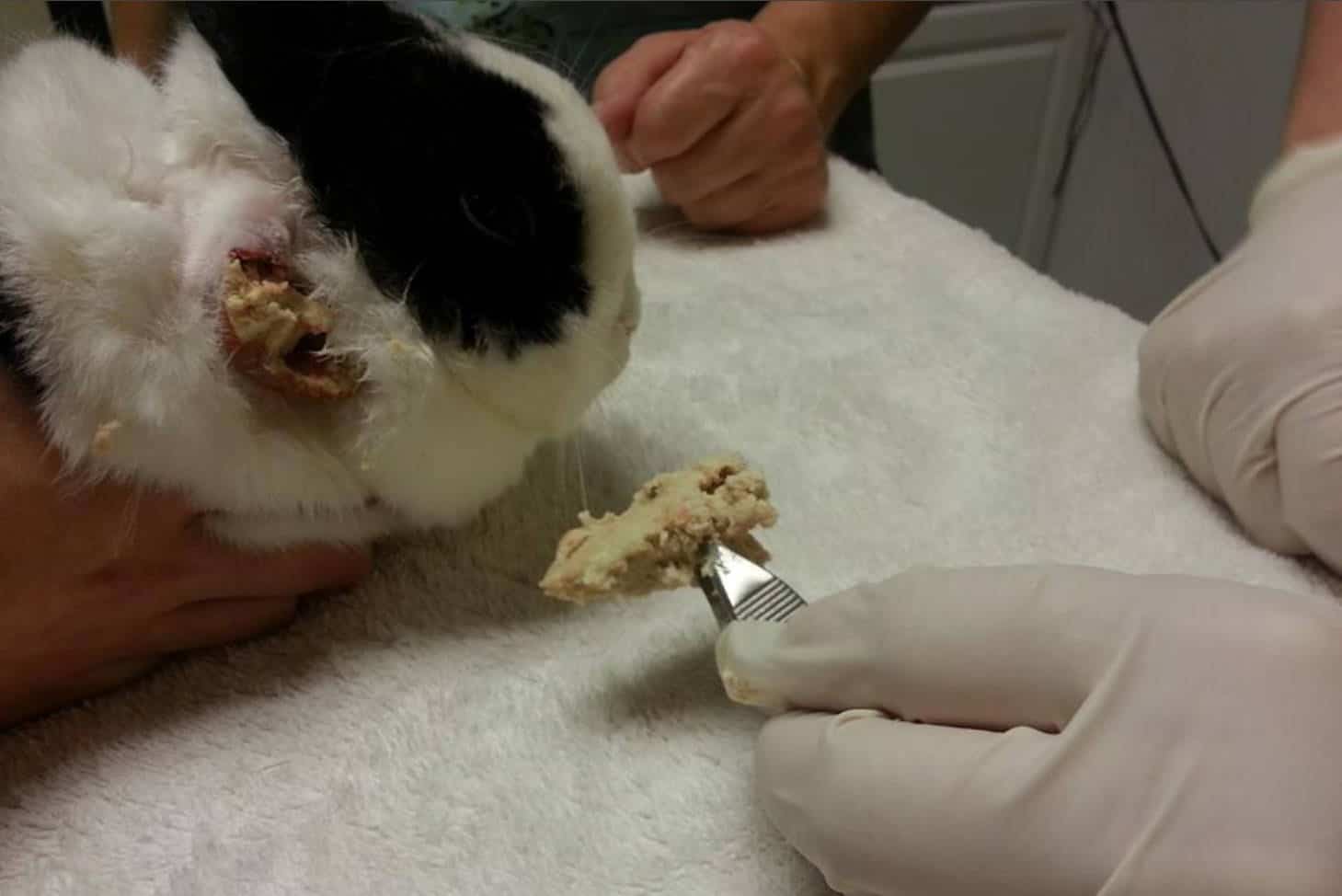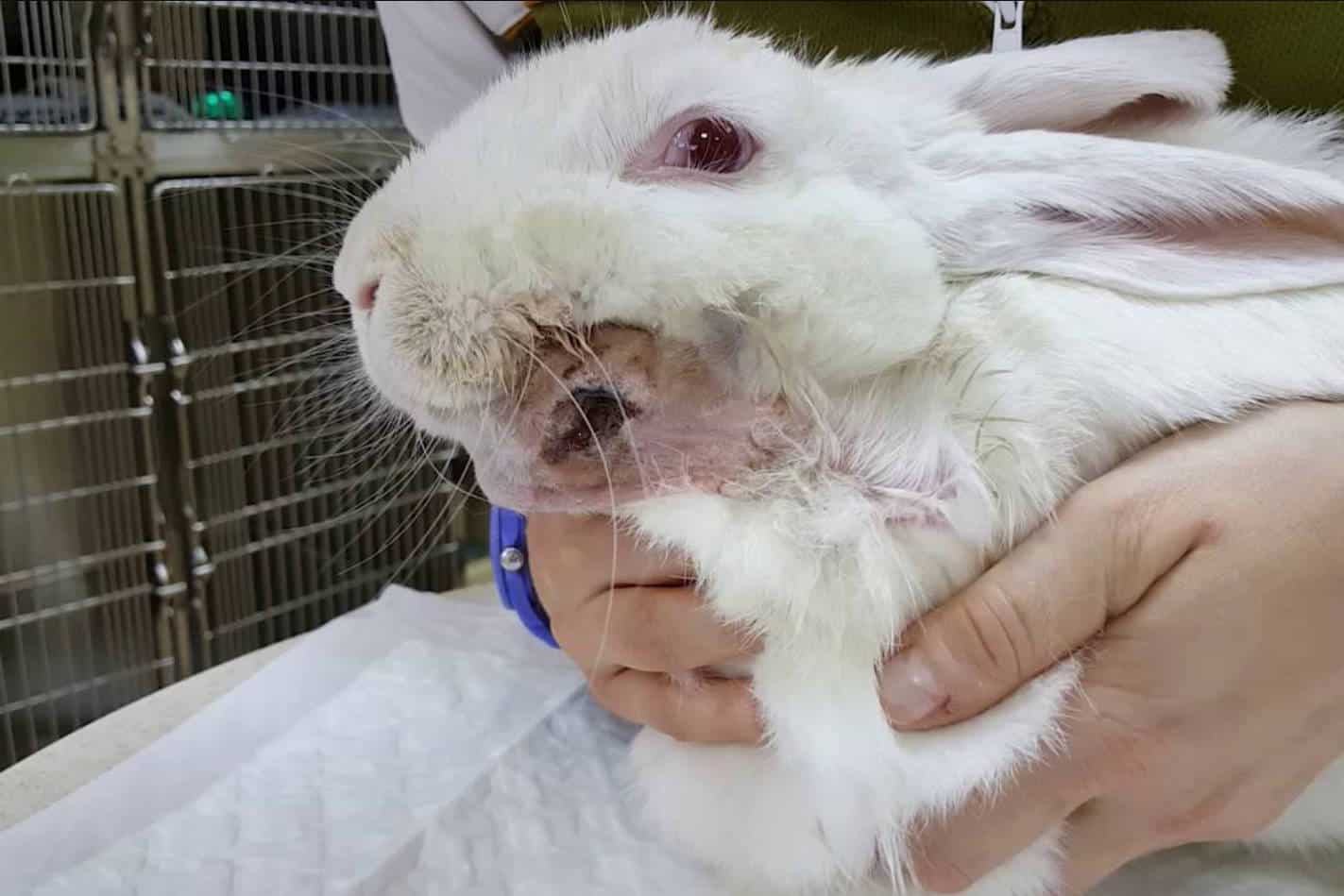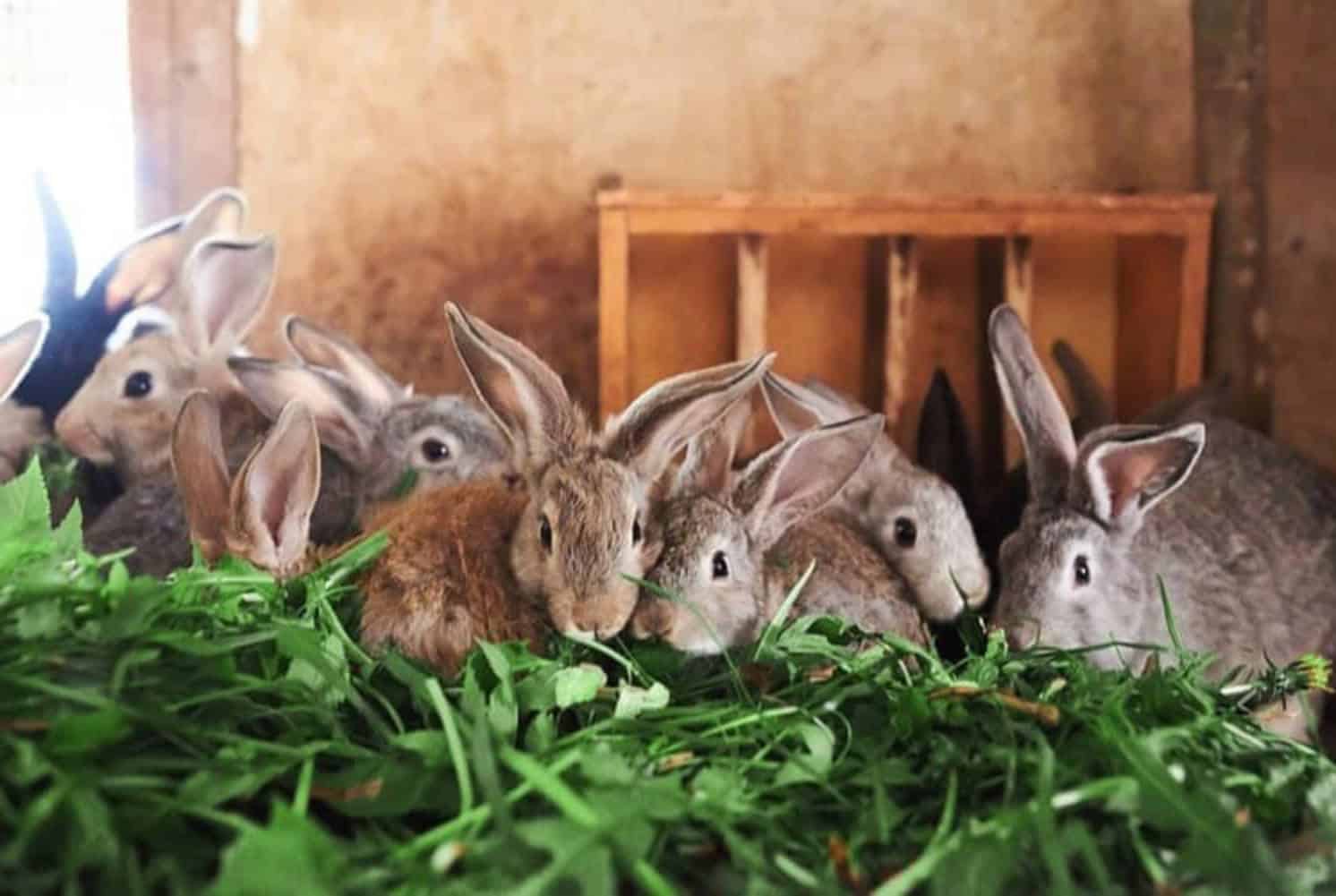If information about rabbit abscess is what you are looking for, you came into the right place. In this article, we will tell you all about rabbit abscess, its symptoms, causes, treatment, recovery, cost, and prevention.
What is Rabbit Abscess?
The abscess is the formation of pus on inflamed body tissues. It’s commonly caused by bacterial infection. The disease is characterized by the pus present inside, which is not present on cuts and boils.
When it comes to rabbits, they are commonly found on jaws, cheeks, tear ducts, and mouths. Although, abscesses can form in any part of the body, including internal organs.
There are three common abscesses with rabbits: eye, tooth root, and general abscess.
Symptoms of Rabbit Abscess
Symptoms and signs may differ on a case-to-case basis. With that said, there are several symptoms you can look out for, such as:
Redness and Itching
Redness and itching can be the first signs of an abscess. The rabbit might start to scratch certain parts where the abscess is forming.
Swelling Bumps
After the redness and itching, red swollen bumps will be present in most cases of rabbit abscesses. They are commonly filled with pus.
Swelling or Tissue Inflammation
When an abscess is present in rabbits, it’s often accompanied by swelling and tissue inflammation. The inflammation can occur at the eyes, mouth, or jaws, depending on what type of abscess is present.
Pus
The build-up of pus differentiates an abscess from everyday cuts and boils. The pus is mostly a cream-colored liquid present inside the inflamed tissue. It has a toothpaste-like consistency and can have an awful and pungent smell when an infection is present.
Pus can be present without being on top of the skin. A deep abscess can have pus that can’t be squeezed out.
Fur Loss
Specific type abscesses such as eye abscesses can cause swelling in the glands. There is a liquid present around the area around the tear ducts most of the time. The produced liquid can cause fur loss.
If you notice a discharge of liquid and your rabbit’s fur is wet, it may be a sign of the early stage of an abscess.
Lethargy and Loss of Appetite
An abscess can cause stress to rabbits. They may show signs of lethargy and loss of appetite. It’s best to feed your rabbits through droppers or needle-less syringes to ensure that they stay hydrated and well-fed.
Diarrhea
Since your rabbit is stressed or unable to eat due to an abscess, diarrhea can be a symptom that they are in great distress.
Diarrhea commonly occurs when the abscess is already large and dramatically affects your rabbit’s condition. It’s best to bring the rabbit to the vet as soon as possible.
Causes of Rabbit Abscess
Bacterial Infection
Bacterial infection is the common cause of the abscess. The pus inside the abscess is the dead cells trying to fight the harmful bacteria entering the rabbit’s body.
Many bacteria may trigger the production of abscesses, such as:
- Staphylococcus aureus
- Pasteurella multocida
- Clostridium
- Bacteroides
Cuts and Punctures on the Skin
Cuts and punctures are a gateway for bacteria to enter the skin. The presence of bacteria triggers a reaction on the rabbit’s immune system. The cells trying to fight the bacteria cause abscess due to the dead cells protecting the rabbit from infection.
Cuts and punctures that other animals inflict are another contenders for the cause of the abscess. Since the claws or teeth of animals are significantly filled with bacteria, sustaining an injury from those may result in an abscess.
Compromised Immune System
An abscess can appear due to a compromised immune system. The rabbit’s body fights off the bacteria or other foreign substances entering its body.
Treatment
Treating rabbit abscesses is not a walk in the park. Unlike common house pets such as cats and dogs, you should bring your rabbit to the veterinarian to know the best course of action.
Acting immediately with treatment will lessen the amount of stress and costs for you. Once you notice any symptoms, it’s best to get to the professional as soon as possible.
There are many reasons why rabbit abscess is very hard to deal with, such as:
The absence of enzyme myeloperoxidase makes the puss hard in consistency, thus more challenging to remove. It also allows the abscess to produce a fibrous wall, making antibiotic treatment harder.
You can’t flush out the entire pus at home. Most veterinarians let the rabbits go under sedated surgical removal as the pus is very hard to remove.
The abscess develops finger-like bumps and tracts that may cause another abscess.
Antibiotic Therapy
Antibiotic therapy is one of the common treatments for early formed and superficial abscesses. Veterinarians will give the rabbit oral or cream antibiotics or a combination of two.
It’s to ensure no remaining bacteria inside the abscess; vets will flush the pus out and clean the cavity. Most of the cleaning on the cavity is with the anti-bacterial chemical. Putting antibiotics inside the abscess’ flush cavity is another way to ensure no bacteria remain inside.
Antibiotic therapy might take weeks to a month. There is no hospitalization required for an antibiotic treatment most of the time. Follow-ups are standard to see if the treatment is working.
Surgical Removal
When it comes to rabbit abscesses, surgical and veterinary care are the most common and safe treatments. You can ensure that no abscesses and puss remain inside the cavity through surgical removal.
Most of the time, there are underlying issues that cause an abscess. Veterinarians will also treat the underlying issues that the rabbit is as healthy as it can be.
Shallow Incision
A form of surgical removal, shallow incisions is a procedure where the puss is extracted through cuts on the surface of the abscess.
The surgery will put the rabbit under sedation. Antibiotic treatment is still administered after the surgical removal of the puss. Follow-up is expected as the veterinarian will check the removal of the abscess.
There are one to three days of hospitalization period most of the time. Although, if the shallow incision is small, the rabbit can go home the same day.
Removal Surgery
Abscess inside the eye is very challenging to remove. Most of the time, it will result in conjunctivitis.
If not immediately treated with antibiotics, removal surgery might be the best course of action. The eyes will be removed to avoid infection spreading further. Even when the antibiotics are effective, there is a big chance that the rabbit will lose its vision.
The removal surgery will cause hospitalization and weeks’ worth of post-surgical care.
Cost
The costs of abscess treatment will vary from treatment to treatment. Veterinarian facilities and where the treatment is done are also essential factors for the cost of treatment.
Antibiotic treatment is the most cost-efficient rabbit abscess treatment. It can cost around $100-$150. That’s why taking early action is essential in treating sickness and infection, as it can lower the cost of treatment.
Depending on what type of surgery the rabbit has, it can cost around $200-$500. Having surgery will also have many add-on costs. Pain and antibiotic medications are common after taking any surgery.
The hospitalization bill will also increase as the rabbit stays for tests and examinations.
These numbers are just an estimation. As stated above, the price varies as various factors affect the costs.
Prevention
You can take many steps to prevent the forming of abscesses on rabbits, such as:
Better Diet
A good diet is a cornerstone for developing a better immune system. Make sure that your rabbit is eating food packed with vitamins and minerals. Alfalfa hay and other various grass will give your rabbits an ample supply of nutrition.
There are also vitamins specifically for rabbits. Regular check-ups are also great for the overall health of your pets.
Avoid a Living Space with Aggressive Animals
You must keep your rabbits away from animals that might scratch or bite them, including other rabbits.
As stated above, cuts and punctures are open holes for bacteria to come in. Avoiding them is an excellent way to prevent the formation of an abscess. A good living space is a perfect way to lessen the stress of rabbits.
Check Lumps as Soon as Possible
The formation of lumps is something you should immediately investigate. The rabbit will have a higher chance of treating the abscess with antibiotics without any surgery by checking it early.
Treat Infections Immediately
An abscess can be a symptom of undergoing infection. By treating other conditions such as in the eyes or teeth, you will have a better chance at preventing abscesses from forming.
Perform Good Hygiene
The cages and environment of rabbits must be clean and sanitary. Regularly cleaning feeding bowls and their food will lower bacteria around the animal. Giving them a good living space is also a good thing to do.
In Conclusion
No one wants their rabbits to suffer from abscesses. It can be highly stressful not just for rabbits but also for their caretakers.
This guide is designed to inform you of what options you can take when tackling rabbit abscesses. We hope the article helped you tremendously.
